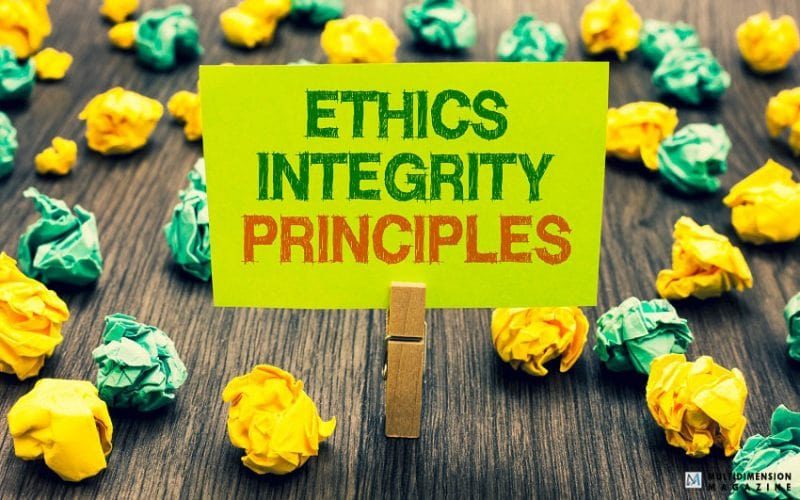Written by : Shreya Seth
Photo credit : Shutterstock.com
The new Netflix docu-drama, ‘The Social Dilemma’ begins with a dramatic background score and a disconcerting quote-cum-disclaimer that subtly fades in : ‘Nothing vast enters the life of mortals without a curse.’
Well intentioned and carefully structured, this documentary-drama hybrid that runs into 1hr 33 minutes, has come as a reminder, if not a revelation to many. Directed by Jeff Orlowski, ‘The Social Dilemma’ attempts to tell us all about the big bad world of social media right from the horse’s mouth- in this case, a bunch of apologetic ex-employees of tech giants like Google, Facebook, Twitter, Youtube, Instagram, Pinterest, who at some point arrived at this blaring realization, that their companies were not just developing social media platforms, but in fact running, what they now term, ‘corrosive business models.’
Social media feeds off our lives. Every little thing we do or choose not to, is declared on these platforms. Maybe that’s where the term ‘news feed’ comes from, because it feeds off us- our joys and miseries. But how did these social networking sites become an indispensable part of contemporary life? In 1997, Andrew Weinreich founded the website ‘Six Degrees’, which was credited by many as the first social media site that allowed users to create profiles, list their friends and family and add them to their network. It became immensely popular after it garnered over a million users in a short period of time. Though it was shut down in 2001, it set a precedent for many social networking websites. The internet was soon flooded with options- Friendster, MySpace, LinkedIn, Orkut, Facebook, Twitter and so on, all equipped with features and upgrades claiming to be better than the other. Frankly, there was no looking back. Our PCs had now been replaced with smartphones that had pre-installed apps and a play store where we could download these applications for free or purchase to our heart’s content, the only impediment being the phone’s dying memory, which was also promptly addressed.
‘The Social Dilemma’ is unsettling, to say the least. The documentary majorly relies on interviews of these ex-employees turned responsible global citizens, scholars, and former investors, who believe that it is their moral responsibility to caution others and attempt if not to undo, but at least limit the scope of harm that awaits us, and fuses them with a parallel fictional account of a suburban family that struggles to keep up with the growing demands of these platforms.
At the outset, no one anticipated where this was heading. People were quick to sign-up and recommend these sites, while the companies were busy pushing their boundaries, upgrading their platforms, placing advertisements, and tapping on all sources of profitability. Many of these employees also felt that social media was ‘fundamentally a force for good’ where ‘meaningful systemic changes were happening.’ Well, there is no denying that these platforms did bring about meaningful changes- as a cost-effective means of connecting diverse populations, giving them a platform to voice their concerns and opinions, launching awareness campaigns, helping businesses prosper, locating donors and the like. Historic movements like ‘Occupy Wall Street’ and ‘Black Lives Matter’ for example, would also not have mobilized the support they did if it were not for the political engagement that these platforms helped facilitate. But everything wasn’t as promising as it appeared to be on the outside, we were falling into the abyss.
Tristan Harris(former design ethicist at Google and co-founder of the Center for Humane Technology), one of the primary interviewees of this documentary, explains it succinctly. “If something is a tool, it genuinely is just sitting there, waiting patiently. If something is not a tool, it is demanding things from you, it’s seducing you, manipulating you. It wants things from you. We’ve moved away from having a tools-based technology environment to an addiction-and manipulation- based technology environment.” Social media reduced us to mere specimens without triggering our awareness, and unfortunately we learned to live with it. The more information we feed to these platforms, the lesser control we have over our choices.
The documentary touches upon a host of problems, because clearly, there are plenty. From unchecked and unregulated usage of these platforms which aggravate cyber-bullying and sexual harassment, teenagers and young adults battling anxiety and depression as their self-esteem crumbles, the Russian cyberattacks, the horrific moyblynching in India, the Rohingya crisis in Myanmar, to the PizzaGate conspiracy theory- the information ecosystem has been manipulated to an astonishing extent. And one must admit, that the director has done a terrific job at terrifying us with the statistics, the fictional account of the family, and the interviews of these reformed tech-insiders. There is something immensely alluring in the documentary’s approach in getting people who built these platforms and features for financial maneuvers, to admit to their wrongdoings. But, here’s the catch. What difference do these petrifying disclosures make to the masses now, while the very people who consciously exploited vulnerabilities in human psychology to develop these platforms claim that they were blissfully unaware of the consequences?
Let’s take the example of the mob lynchings in India that were a result of the widespread circulation of fake news and rumours relating to child abduction and organ harvesting on Whatsapp. The states of Assam, Karnataka, Jharkhand, Maharashtra among others were widely affected by the spread of disinformation on these platforms, which resulted in the brutal killings of dozens of people. The availability of smartphones and cheap internet plans allowed many first time users to access these platforms, but lost in this vast array of forwarded messages, they were unable to tell the difference between what was ‘authentic’ and ‘fake’, resulting in these horrific incidents. Whatsapp responded by condemning these incidents and making minor changes like reducing the number of members on a group and limiting the number of times a message can be forwarded to five chats only. However this wasn’t enough to curb the spread of false information and rumours in a country that turns to be the largest market for Whatsapp in the world with over 2 billion users.
Almost every other person we know uses Whatsapp, Facebook or social media of some kind, and must be part of some group(s), consisting of family members, friends or people from the neighbourhood, where a string of messages ranging from politics to healthcare are circulated every day. The recent controversy around the death of a famous Bollywood actor in India is a case in point. Fuelled by mainstream media coverage that has taken upon itself to vilify women and the film industry, the hidden yet ‘empowered’ social media user can conveniently plant and spread conspiracy theories and level allegations against people based on these posts and messages. The spate of attacks doesn’t just stop at that, in its ugliest form it presents itself as rape and death threats, and we only fear what awaits us next.
Can these tech giants absolve themselves of the responsibility that comes with this programmed technology? They wanted us to be in close proximity to these devices that gave us access to more information, fake news, and conspiracy theories, wanted us to scroll and refresh repeatedly till we fell asleep and woke up to it the next morning, to spend the rest of our lives on the hamster wheel. By reminding people that they have been mined and exploited by these extractive business models, the documentary eventually places the onus on the users by asking them to regulate their social media activity and not fall prey to these traps that were consciously laid out for us. Of course there are long term changes that have been suggested, like holding these companies accountable and transforming the way in which these technologies function , but it all comes down to these self-regulated quick fixes in the end.
‘At the end of the day, this machine isn’t going to turn around unless there’s massive public pressure’, ‘Turn off notifications’, ‘never open a video recommended to you on youtube, always choose’, ‘fact check, consider the source’, ‘delete’, ‘get off the stupid stuff.’ Well, it’s easier said than done, isn’t it? This may prompt some people to uninstall applications and get off their devices, at least temporarily, but does that solve the problem?
Director Jeff Orlowski, known for Emmy-Award winning documentaries Chasing Ice (2012) and Chasing Coral (2017), does a commendable job at initiating a much needed conversation around social media. ‘The Social Dilemma’, however, fails to tell us why after all these disclosures, it fundamentally expects the ‘users’, who have been manipulated, and in most cases, driven by a growing herd mentality that indulges in this culture of voyeurism, to control and regulate their engagement in their bid to fight these systems, machines, and models that have been designed to predict actions and profit from disinformation? Unregulated social media, as we have witnessed, can be used to spread hate, polarize populations, and incite violence. While it does allow an individual the right to self-expression, these platforms cannot steer clear of conversations around the effects of this technology and its ability to divide society. By emphasizing on this aspect, it underestimates the ability of these platforms to reach and influence diverse populations that may or may not be sensitized about the ills of such carefully designed technology powered by surveillance capitalism.
(The views expressed in this article are the author’s own and do not necessarily reflect Multidimension’s editorial stance.)
About the author : Shreya Seth lives and works in Kolkata, India.




